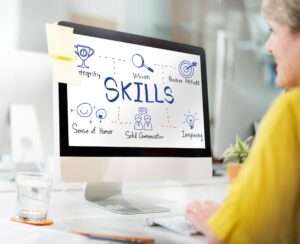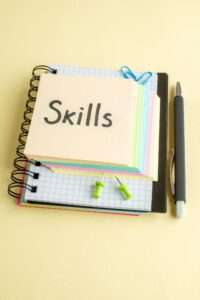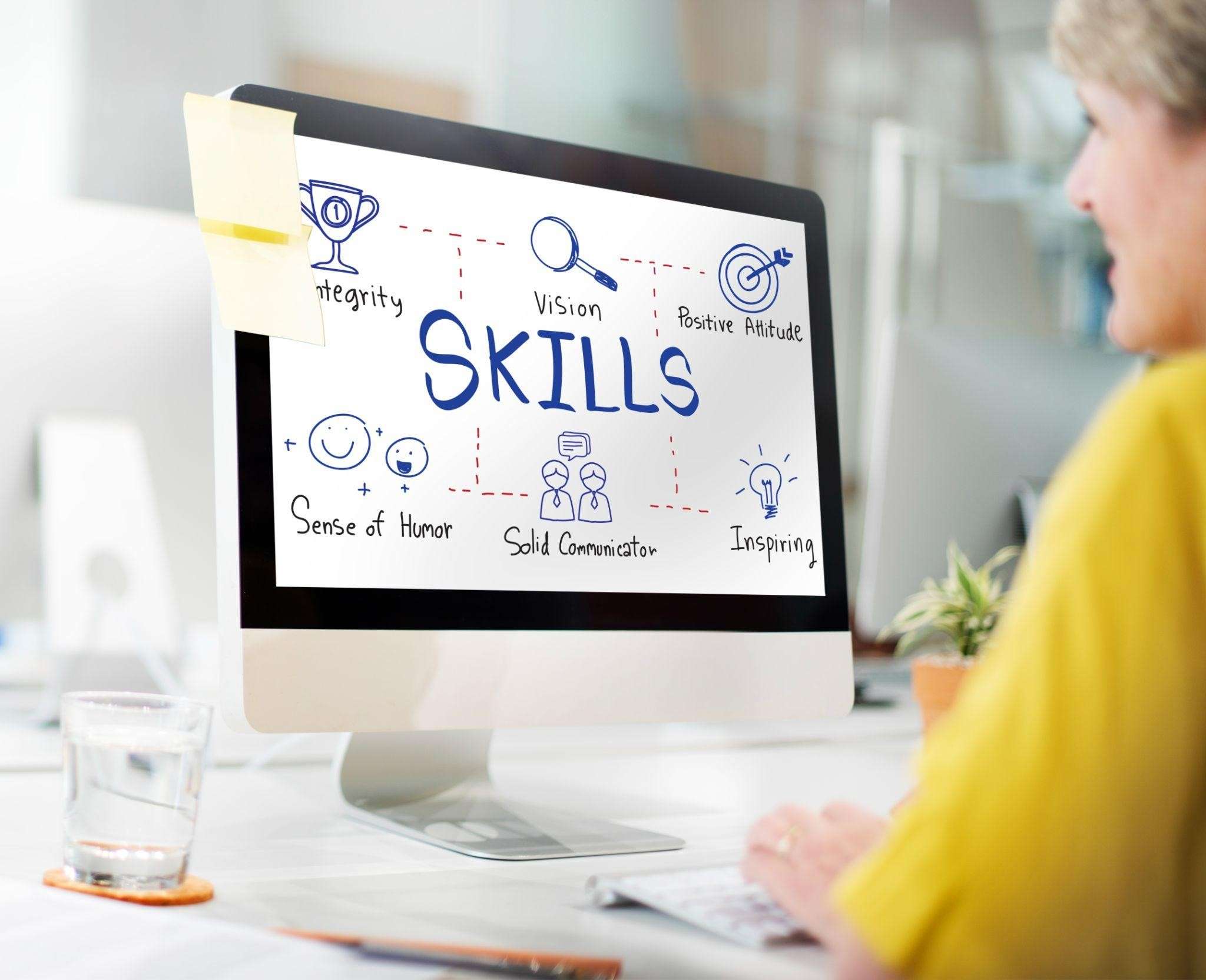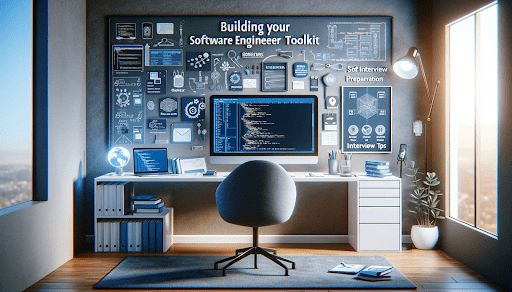The purpose of skill assessment is to test how well someone knows a specific skill required for a job. It measures their knowledge and compares it to the expected standards to determine their proficiency.
People might do skills assessments in different situations, like:
- Tests and exams in school.
- Job interviews.
- When their boss reviews how well they’re doing at work.
- When they apply for a better job.

Nowadays, many people are looking for jobs, and companies have a hard time picking the right people. They’re trying new ways to figure out if job seekers have the right skills. One way is using smart computer programs, also known as AI, to check how good people are at technical stuff. This AI tool has good points, but also some not-so-good points. This article will talk about how this AI tool changes how companies hire people, the good and bad sides of it, and what it could mean for the future.
Research Findings: The Impact of AI-Based Technical Test Assessment Tools
Enhanced Candidate Evaluation:
AI-based technical test assessment tools have proven to be highly effective in evaluating candidates’ technical skills and knowledge. Traditional assessment methods, such as interviews and resume evaluations, may overlook essential aspects of a candidate’s abilities. AI-driven tests, on the other hand, can provide a comprehensive and objective evaluation, ensuring that only the most qualified candidates progress to the next stages of the hiring process. These tools enable recruiters to identify the right fit for specific technical roles more efficiently, reducing the risk of hiring mismatches and promoting workforce productivity.
Time and Cost Savings:
One of the most significant advantages of AI-based technical test assessment tools is their ability to save time and costs associated with the recruitment process. Traditional evaluation methods often require significant human involvement, from creating and grading tests to interviewing candidates. AI automates much of this process, allowing recruiters to focus on other critical aspects of hiring, such as candidate engagement and cultural fit assessments. By streamlining the evaluation process, organizations can accelerate their hiring timelines and onboard top talent faster, giving them a competitive edge in the market.
Reduction in Bias and Unconscious Prejudice:
Human biases can unintentionally influence the hiring process, leading to discriminatory practices. AI-based technical test assessment tools, when designed with inclusivity and fairness in mind, can help minimize bias and unconscious prejudice. These tools focus solely on evaluating a candidate’s skills and performance, disregarding demographic information, personal background, or appearance. As a result, organizations can build a more diverse and inclusive workforce, which has been proven to boost creativity, innovation, and overall business success.
Benefits of AI-Based Technical Test Assessment Tools

Objective and Consistent Evaluation:
AI-driven assessments provide consistent and objective evaluations, eliminating the subjectivity that often arises in traditional evaluation methods. By using standardized testing methods and predefined scoring criteria, these tools ensure that each candidate is assessed fairly and without bias. This objectivity is especially crucial when hiring for technical roles, where specific skills and competencies are essential for success.
Skill Gap Identification:
AI-based technical test assessment tools not only assess candidates but also help organizations identify skill gaps within their current workforce. By analyzing the test results of existing employees, businesses can understand their strengths and weaknesses, enabling them to tailor training programs effectively. This data-driven approach to skill development ensures that the workforce remains up-to-date with the latest technologies and industry trends.
Scalability and Accessibility:
AI-based assessment tools can scale effortlessly to accommodate large numbers of candidates simultaneously. Whether an organization is hiring for a single position or multiple vacancies across different locations, these tools can efficiently manage the evaluation process. Moreover, they provide candidates with the flexibility to take tests from their own devices and locations, making it accessible for candidates from diverse backgrounds and geographies.
Challenges in Implementing AI-Based Technical Test Assessment Tools
Test Security and Cheating Prevention:
One of the primary concerns with online assessments is ensuring the security and integrity of the tests. Cheating and plagiarism can compromise the accuracy and reliability of test results. AI-based tools need to implement robust security measures to prevent candidates from accessing external resources or collaborating with others during the assessment. Techniques such as facial recognition, keystroke analysis, and remote proctoring can address these challenges to some extent.
Algorithm Bias and Fairness:
While AI aims to minimize human bias, the algorithms driving these assessment tools can inadvertently incorporate bias present in the data used to train them. Biased algorithms may lead to unfair evaluations and discriminatory practices. To overcome this challenge, developers must carefully curate and diversify the training data and continuously monitor the algorithms’ performance to detect and rectify any biased outcomes.
Limited Scope of Evaluation:
Although AI-based technical test assessment tools excel at evaluating technical skills, they may not adequately assess other essential attributes, such as communication, teamwork, and problem-solving under real-life scenarios. A comprehensive hiring process should consider combining AI-driven assessments with other evaluation methods to gain a holistic understanding of candidates’ abilities.
Potential Future Developments
Continuous Adaptive Testing:
As AI technology evolves, we can expect AI-based technical test assessment tools to move towards continuous adaptive testing models. These models dynamically adjust the difficulty level of questions based on the candidate’s performance, ensuring a personalized evaluation that accurately gauges their skill level. Continuous adaptive testing can lead to more accurate and precise results, benefiting both employers and candidates.
Natural Language Processing (NLP) Integration:
Future developments may include incorporating advanced natural language processing capabilities into AI-based assessment tools. This enhancement would allow tools to assess not only coding skills but also a candidate’s ability to comprehend and communicate complex technical concepts effectively.
Advanced Performance Analytics:
Advancements in AI will likely lead to more sophisticated performance analytics. Employers may gain deeper insights into candidate performance, identifying specific areas of strength and improvement potential. This level of analysis can help organizations make more informed hiring decisions and tailor training programs to individual needs.
Tips for conducting a Skill Assessment in the Hiring Process
Conducting a skill assessment during the hiring process is crucial to ensure that you hire candidates with the right capabilities and expertise for the job. Here are the steps to effectively conduct a skill assessment:
Define Job Requirements: Start by clearly defining the specific skills and competencies required for the position. Work closely with the hiring manager and team to identify the essential technical, soft, and domain-specific skills needed for success in the role.
Choose the Right Assessment Methods:
Depending on the nature of the position and the skills you want to evaluate, select appropriate assessment methods. Common skill assessment techniques include:
a. Technical Tests: Conduct technical tests relevant to the job, such as coding challenges, problem-solving exercises, or technical simulations. These tests gauge a candidate’s hands-on abilities and knowledge.
b. Behavioral Interviews: Use behavioral interviews to assess soft skills, communication, teamwork, adaptability, and problem-solving abilities. Behavioral questions ask candidates to provide examples of how they handled past situations, providing insights into their suitability for the role.
c. Case Studies: For certain roles, such as management or consulting positions, present candidates with real-life scenarios or case studies that mirror the challenges they may encounter in the job. Assess their analytical and decision-making skills based on their responses.
d. Portfolio Review: For creative or design-related roles, review candidates’ portfolios to evaluate their previous work and assess their artistic abilities, creativity, and attention to detail.
e. Role-Play Exercises: For customer-facing roles or positions that require specific interpersonal skills, conduct role-play exercises to observe how candidates handle various situations.
Implement Online Assessments: To streamline the skill assessment process and efficiently evaluate large candidate pools, consider using online assessment platforms. These platforms can host technical tests, behavioral assessments, and other evaluations, providing instant results and standardized scoring.
Involve Subject Matter Experts: If possible, involve subject matter experts or current team members in the assessment process. Their expertise can provide valuable insights into candidates’ technical proficiency and suitability for the role.
Focus on Real-Life Scenarios: Whenever possible, design skill assessments that mirror real-life scenarios candidates may encounter in the job. This approach provides a more accurate representation of their capabilities and how they might perform in the role.
Be Consistent and Objective: Ensure that the skill assessment process is consistent and objective for all candidates. Use standardized evaluation criteria and scoring rubrics to avoid bias and ensure fair evaluations.
Consider Cultural Fit: While assessing technical skills is crucial, also evaluate candidates’ compatibility with the company’s culture and values. A candidate who fits well within the team is more likely to thrive and contribute positively to the organization.
Provide Feedback: Offer feedback to candidates after the assessment, regardless of whether they move forward in the hiring process or not. Constructive feedback can help candidates understand their strengths and areas for improvement, leaving a positive impression of your organization.
Combine Multiple Assessment Methods: To gain a comprehensive understanding of candidates’ abilities, consider using a combination of assessment methods. By using various techniques, you can get a more well-rounded view of each candidate’s skill set.
Document the Results: Keep detailed records of the skill assessment results for each candidate. These records will help you make informed hiring decisions and serve as a reference for future assessments.
Read more about :
All You Need to Understand Regarding Skill Assessment Examinations
How to Test Employee Performance Using the Best Skill Assessment Software
Essential Technical Skills for a Performance Tester
Conclusion
AI-based technical test assessment tools are poised to play a transformative role in modern hiring processes. They provide enhanced candidate evaluation, cost and time savings, and a reduced risk of bias in hiring decisions. However, they also come with challenges, such as test security and algorithmic bias, which require careful consideration during implementation. Looking ahead, future developments in AI will likely introduce more personalized and comprehensive assessment methods, ultimately improving the overall efficiency and effectiveness of talent acquisition in the technology-driven job market. Embracing these advancements responsibly will empower organizations to build a skilled and diverse workforce, driving innovation and success in the digital age.



